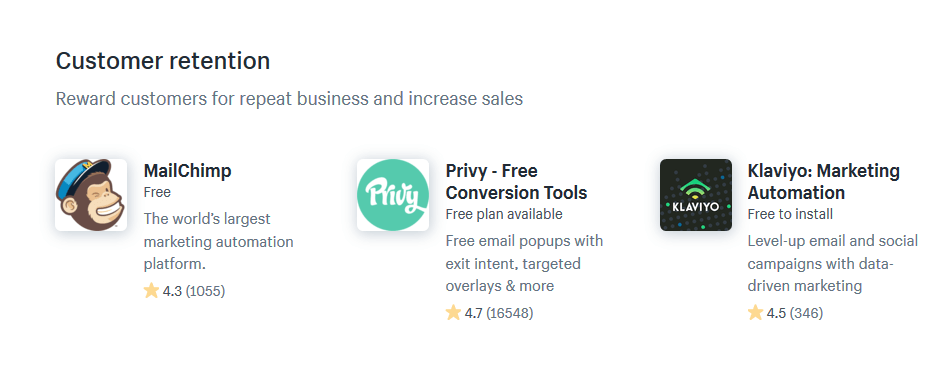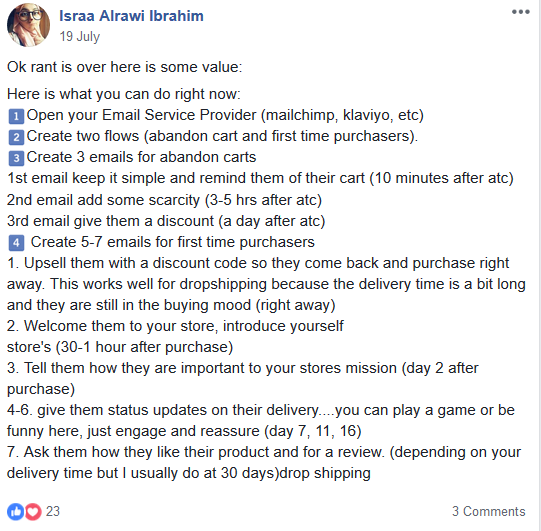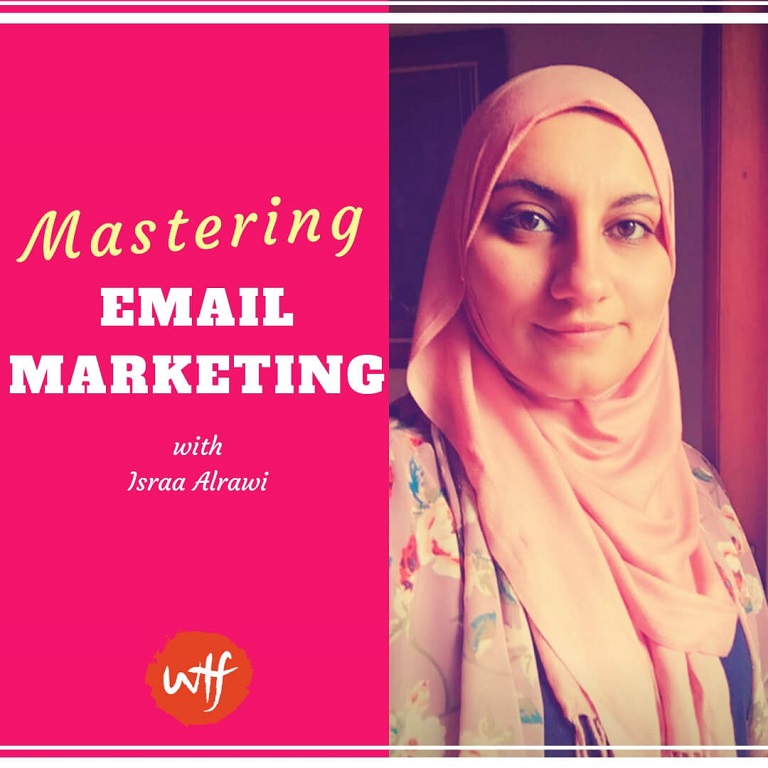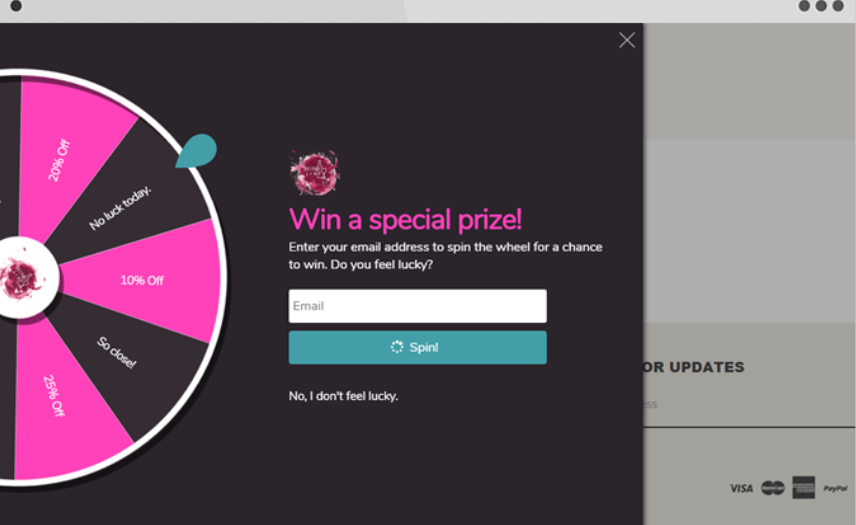How To Master Ecommerce Email Marketing – With Israa Alrawi
- Sep-08-2018
- Harris Sid
- 0 comments
Email marketing and Shopify stores pretty much go hand-in-hand thanks to a wealth of Shopify apps that set up great e-commerce email campaigns and automations. And with email marketing platforms like Mailchimp and Klaviyo being as cheap as they are, the barrier for entry has never been lower.
However, most Shopify store owners only use email campaigns when it makes sense to them, rather than proactively thinking about an ecommerce email marketing strategy. There is an abundance of courses, tutorials and videos out there right now that you can learn from but few ever share intimate details about tangible experiences and the minutiae of the problems that come along with it.

The newly revamped Shopify store has a special section for email marketing apps
Email Marketing For E-commerce: Where to Learn?
In the past year I have learned more from experts on marketing-related Facebook groups than I have from any Youtube channel, blog or book. When people post their experiences, experiments, results and successes, it becomes a better teaching tool than any other kind of medium out there. There’s a raw, direct “on-the-ground” reality to such posts that you can only learn from if you’re actively looking for them on social media.

Among these was NY-based Israa Alrawi, an e-commerce entrepreneur who was using email marketing to generate a large chunk of her business. Better yet, she regularly shared her findings in the Momentum Marketing Facebook group, which is where I was inspired by her expertise on the subject. I decided to do a Q&A about it for our readers covering many of the problems and challenges that Shopify store owners face in terms of generating sales from highly converting email campaigns.

For our readers, tell us a bit about yourself, what you do, and how your experience with e-commerce began.
Answer: My name is Israa and I started in Ecom about 1.5 years ago knowing nothing. My background is in the health and safety field so to shift into e-commerce and digital marketing was a big jump.
I am a curious person and have always wanted to start a business and understand all the moving parts it takes to actually owning a business. So I did my research and jumped at the opportunity (although totally terrified) to learn and become part of the entrepreneurial world. I opened the store in February 2017 but didn’t really start making profitable sales until July that year.
as Facebook ads became unstable, I turned to other sources of traffic and revenue
Through data feedback from ads I was I able to determine my audience and pair them with a product that went wildly popular. Being new to the marketing I decided to hire an advertising agency to scale my product, which backfired and they set me back. I ended up losing all profit and being in debt by December.
I took my account back and worked on getting the account back from store optimization to ad creatives to marketing. I did it all on my own. By January, I had created a unique variation of the first product. The variation product became even more popular allowing us to hit 250k in revenue in 4 months. Through this we created an entire collection. We grew exponentially at the beginning of the year but as Facebook ads became unstable, I turned to other sources of traffic and revenue and found that I enjoyed Email Marketing the most.
I personally am a big fan of the email marketing tips you’ve shared in some marketing groups. How did you go about learning/conceiving these strategies? Any recommendations for resources that newbies can benefit from?
Answer: There are a lot of components to running a business and I guess I started mine in order to find my strength and be able to improve and help others do the same. Since I started my business I have always been diligent in having my emails set up to capitalize on the customers journey. We all know that most customers don’t buy on their first visit (or first touch) so having your emails set up to interact with your potential customer is vital. You need to introduce them to your brand, give them content, and then ask them to buy. They need to be familiar with you and comfortable at the same time to trust you.
a customer who has interacted with your business is 10 times easier to convert again
It’s funny, I didn’t really capitalize on my email list until my ad performances tanked. Everything stopped working and I realized the only way I can keep my business going is by utilizing my email list. Plus a customer who has interacted with your business is 10 times easier to convert again than prospecting customers. So I just started emailing. As the data came in, I fine tuned my strategies to what works best for my customer base.
I do have a mentor and she’s the Queen of email. If you truly want to learn about email and how to make money from your list, I highly recommend joining Gabriella Rapone’s Email Maverick Facebook Group. She will teach you how to actually Inbox so you can reach all of your customers and make the most out of your email list.
Email Signups & Customer Feedback

Aside from discounts, what are some lesser known email-signup hooks that work well in your experience?
Answer: Content and rallying around a cause. Giving great content that is relatable to your niche is the best way to sign up “higher quality” potential customers. We live in an information overload world and people are having a hard time deciphering all the content that is thrown at them every day. If you can successfully target your audience and give them good solid content that can improve their lives then you will not only be able to sell to them but build a long term relationship for your brands lifetime.
How can we make email signup pop-ups not seem annoying? Most stores use these on exit-intent, but rarely have I seen anyone offer real value in exchange for an email signup.
Answer: I actually don’t have an exit intent popup on my store. I do find them annoying. I am using the wheelio app which allows customers to spin for extra savings capturing their emails but lately I have been thinking of moving away from this since the quality of emails are not great. To make your life easier with email you would want to create an email capturing pop up that provides value because then you can actually attract the right type of customer.
Right now, I give an automatic discount to customers who join my newsletter at the bottom of the site. They don’t have to leave the site to get the code, which I know kind of goes against conditioning them to open their email BUT it does push that potential customer to buy giving me a better quality of audience to sell to in the backend. It converts well and is not pushy. For future purposes though, I am thinking of creating a digital product that I will give away if they sign up to the newsletter. This way I am giving my customers a LOT more value in exchange for their email.
Most online stores use email marketing as a one-way conversation. Are there any tools and strategies that can create value by generating feedback (in addition to more sales) from customers?
Answer: Absolutely! The BEST way to improve your emails is through your customer’s feedback. I generally try to engage with my customers 1-2 a week asking for feedback. We either direct them to our social media pages to take a poll or send out an incentivized survey to get their opinion. We also utilize reviews. The more you know what your customer wants, the easier it is to cater to their needs. Most of our product launches are based on customer feedback. This is why they are successful and become long-term products.
Ecommerce Email Marketing Platforms & Campaigns

In your opinion, what’s the best e-mail platform for Shopify stores, and why?
Answer: To be honest, there isn’t just one ESP for Shopify that’s the best. I do use Klaviyo because I like the segmentation options and split testing features. However, they do have their limitation for trigger emails which can deter customers from completing a process. MailChimp is probably the most popular because it is less expensive and does have trigger email features that Klaviyo doesn’t offer. In the end, the ESP is just a platform to deliver your email. You need to do your due diligence to make sure that your emails are actually being delivered, which is a whole different topic 🙂
What are some essential campaigns that every store should be running but don’t? I see a lot of abandoned cart recovery emails but not many tend to get creative with them.
Answer: The five main ones I recommend are: Abandon Cart, Browse Abandonment, First time purchasers, Newsletter Subscribers, and Winback.
Abandoned Cart emails:
This is important and you should have it set up to capture part of your abandon cart audience who may have been distracted from completing their purchase or needed an extra incentive. It’s important to note here that you should always write your emails with the focus on your customer and not your product. Answer their doubts and give them the benefit of purchase. People want to know that you genuinely care about them and not just making the sale. But also understand that only one-third of abandoned cart customers actually purchase.
Browse Abandonment emails:
A lot of people miss this flow but it can be a gold mine. Think of it as your re-targeting campaign for view content (Viewed Products). Just like Abandon Cart Flow, this helps bring back the customer to your site and the product page. It’s worth setting up and catching those “distracted” buyers. Think of it as a free retargeting campaign for potential buyers that visited your site.
First-Time Purchasers:
This is the MOST important flow and where most of your money will be made. I recommend anywhere from 4-7 emails for this flow. Why? Because these are your customers! They already bought, so what now? You treat them like royalty! These emails should be focused on all the benefits of buying your product, insight into your brand, and how they have become part of something greater. They are easy to upsell and cross sell to as well through this flow. Just make sure you keep them in the loop of their product journey (from sale to delivery). You can get really creative with this flow and cement your relationship fairly quickly with your customers.
Newsletter Subscribers:
This flow should focus on content first! They subscribed to your newsletter because they want to “know more”. Remember they aren’t purchasers yet but can be with the right content and offer. So introduce your brand, connect with them, then sell to them.
Winback:
This flow is to keep your list clean and of high quality engaged customers. It is setup to help either bring back and engage customers with your brand (whether they buy or not) or suppress them from your list. Remember your deliverability is based on user experience. Internet Service Providers measure the engagement of your emails with their users and if they aren’t opening or clicking, you can be flagged or spammed.
What basics should a newbie go about setting up when first delving into email marketing campaigns for their online store?
Answer: Honestly, just like everything else in your business there will be a learning curve. Just do it. Choose an ESP, read as much as you can and then test. Ask questions (join Email Mavericks Group). Every store is unique. I have a lot of new business owners messaging me asking for general templates to set up their email flows. General templates will NOT get you the results you want. You will, however, need guidelines of what each flows content is meant to convey. Understanding the message that you need to give your audience (and each audience is unique) is vital and then crafting your content based on what they want to know. For example, throwing up a “Hey come back and finish your purchase” message as an abandon cart email will not get you the open, click through, or purchase rates you are looking for. Instead, appeal to your audience. Ask yourself WHY should they come back to finish? What’s in it for them to take a couple of minute from their lives (and busy schedules) to purchase your product.
What’s the most inspirational email marketing campaign that you’ve seen?
Answer: This is actually hard! You don’t really see much “email inspirations” out there. I feel like it’s an underground society (lol). But if I were to think of an email campaign that would nice to see a case study on is “building a hype” campaign. I read a case study on 5th watches brand by Gretta Rose Van Riel and she did an amazing job building a hype around her email product launch. It’s very clever marketing to build hype around a product launch via social media and then condition your customers to wait for the email with the notification of the launch. This increases your open rates and click through rates wildly.
How do you optimise open rates and click-through rates in your emails? Do you have a set process?
Answer: Split Testing! Generally Open Rates is testing subject lines to see which works best and then re-optimizing every several weeks to see if we can get a higher open rate. This applies to the flow sequences. For Campaigns, I generally split test two separate headlines and let them run for several hours for a controlled group from the email list. Whichever gets the higher open rate will be chosen and sent to the rest of the email list. This has generally worked best. But remember open rates are also reliant on your ability to inbox. So you need to watch those numbers closely and make sure they aren’t dropping.
Click through rates a bit more tricky. I generally try to engage the customer right away when they open their email. Remember, your emails are NOT sales or landing pages. You are supposed to give your customer just enough to be curious or hit a pain point to click through to the actual page you want them to land on. When you give them everything in the email, they will not have any desire to click on your links.
Optimizing Email Marketing Campaigns For Ecommerce

What does your current best-working email flow look like? (Do mention how long it takes to send the first mail, how often, what content, etc.)
Answer: My best-working email flow is the First Time Purchasers Flow. Open rates for first email is around 60% with a click through rate of 14% with order product rate of 2-3%. It’s an upsell email and works really well. It is sent right away when someone makes a purchase to upsell them with an incentive and a scarcity. The rest of the flow has 4 more emails that take introduces the customer to our brand, keep them updated on their products, and asks them for feedback in the end for their overall experience. These emails are spaced out over a 20 day period.
Do you have a checklist of what makes good email subjects and content?
Answer: What I usually do when it comes to launching a new product, advertising a popular product, or just a general sale… I always ask, “Why does my customer even care about this email?” Basically, what is in it for them? If you can always think from your customer point of view you will makes sales a lot easier.
What has been the biggest challenge you’ve ever faced in this field?
Answer: The biggest challenge thus far is deliverability! It’s something I didn’t even realize until I got down to the most technical aspects of email. Your ESP (Mailchimp, Get Response, Klaviyo, Etc) are ONLY sending your emails. They don’t actually guarantee deliverability and some will keep sending your emails too many times after they bounce that it can easily ruin your email reputation! So email is not that simple. You have to keep a seedlist and test your emails to make sure you are keeping a good standing with all the ISP’s so they can actually inbox you rather than sending your to spam or blackholing your emails.
Remember, your emails are NOT sales or landing pages!
Lastly, any advice for struggling entrepreneurs out there?
Answer: Hang in there! Listen, being an entrepreneur is HARD and requires a lot of discipline. Always keep your end goal in sight. Remember why you started and keep pushing. You will be knocked down, lost, feeling lonely, and sometimes embarrassed because you think what you are doing is silly or far reaching. It’s not, hard work pays off. Connecting and putting yourself out there also pays off. But remember to choose who you listen to or allow in your circle wisely. Facts and Data are your friends so choose your circle based on those matters. Keep reading and learning.
I will close on this thought and finally note about email:
Don’t ignore email. Your list is truly where the money is. Think about it, it’s the only thing you really own in your business and it’s a lot easier to sell to your list than prospecting cold traffic. Do you think if email wasn’t important that Amazon wouldn’t allow sellers to keep their list on their platform? Everyone is pushing chatbots and retargeting campaigns (and that’s good) but to entirely ignore your email list is where you will lose out. If all these platforms shut down and ban your accounts, all you have is your list. Use it from the start.
Benefits of Emailing Early:
- Extra revenue
- Helps you define your avatars
- Build high quality custom audiences for your ad campaigns
- Feedback for new product launches
This is why I am actually passionate about teaching email marketing and emphasizing it’s benefits. I probably lost out on 50K in revenue this year because I didn’t take it seriously early on. Plus when your business takes off, you will already have a solid backend to earn you 30-40% extra revenue!
Thanks for your time, Israa!

 Email Funnel – 7 Best Practices to Create Email Funnels for eCommerce
Email Funnel – 7 Best Practices to Create Email Funnels for eCommerce